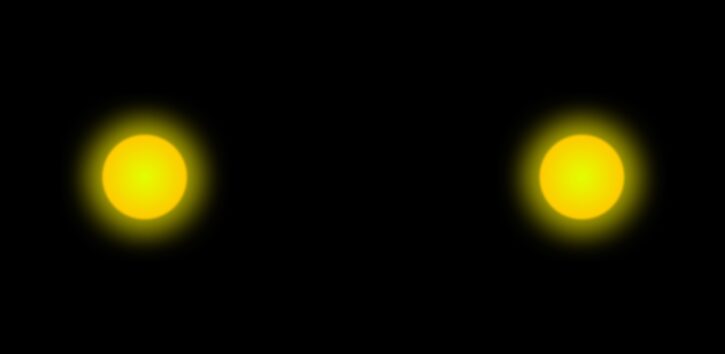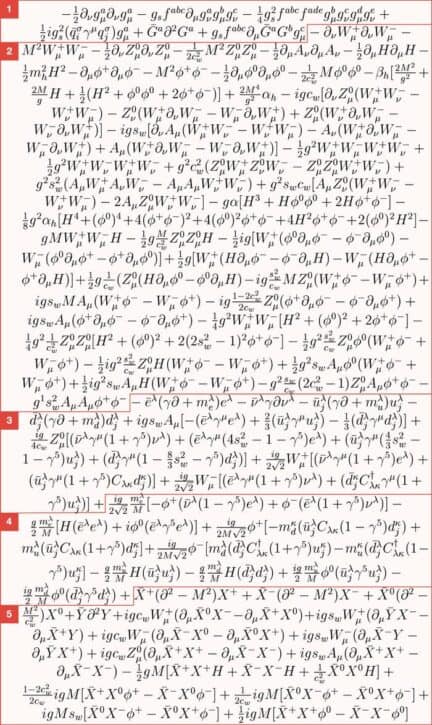
Random – made, done, happening, or chosen without method.
The Dictionary
The concept of randomness is tremendously more complicated than most folks think. First off, physical randomness doesn’t actually exist. And it doesn’t exist because light has a speed limit.
Lost already? You’d be a liar if you said no! 😉
To understand the link between randomness and the speed of light (the “invariant speed” in physics), we need to understand how the speed limit of light is ultimately what’s responsible for causality in our universe. Then we’ll distinguish causality from determinism. Then we’ll be ready to understand what randomness really is.
Light & Godhood
If you haven’t read my primer on relativity theory, I strongly suggest you do so! The first section covers the mechanics of light.
In short, light has a speed limit. That limitation is 299,792,458 m/s (meters per second). Absolutely nothing with mass can exceed that limit – it’s an “invariant” law in physics; equal to all observers. “Thou shall not exceed the speed of light” is just about the first thing you learn in relativity theory.
But why does our Universe have a speed limit? Well, we don’t know why it’s specifically 299,792,458 m/s, but we do know why the limit itself exists logically…

Imagine you’re God. You’re creating a fresh Universe and thinking about the rules you want your Universe to follow. You place two stars some arbitrary distance apart from one another and consider how long it should take for them to influence each other. If you turn your Universe’s “speed of influence” dial to “instantaneous,” then both stars are essentially the same object; distance becomes irrelevant. You think that’s silly and want there to be differences in your Universe between the objects you place in it, so you rotate the speed of influence dial completely in the other direction to “zero.” This time, both stars are certainly distinct objects, but they’re also totally frozen and can’t ever influence each other. You don’t want that either – you want objects to be different, but also to influence each other at some point. You then scratch your head and turn the dial to 299,792,458 m/s, which is a speed you feel good about – not too fast and not too slow. Voilà! We’ve arrived at the maximum speed of causality – the minimum time it takes for cause to have effect.
Pretty easy, right? Well, here comes the tougher pills to swallow.
Determinism
Causality is an absolute in our Universe, which means all effects have a preceding cause (and no causes have a preceding effect). And since time has no beginning, determining the connections between those dots of cause and effect is an infinite process. On top of this, there are insurmountable physical barriers such as the uncertainty principle which place hard limits on our ability to determine things.
What all of this means is true “randomness” is logically impossible in our Universe; there’s always a preceding cause; always a specific reason preceding every effect. Yet, to us puny humans, the Universe makes randomness a seemingly real thing.
But not all of this apparent randomness is the same…
Tiers of Randomness

Psychologically, “random” is about what is known vs. unknown: A layperson might look at this image and simply see random numbers and symbols, where a physicist would recognize it as the laws that govern our Universe expressed mathematically.
I prefer to give randomness three tiers to associate it with the strength of the barriers preventing our comprehension of it.
- Surface Randomness: Events or objects simply laying around that we don’t immediately understand, but could if we sufficiently studied them
- Encrypted Randomness: Events or objects put into configurations intentionally designed to prevent unauthorized understanding
- Physics-Enforced Randomness: Events or objects that can never be fully understood due to physical barriers (the uncertainty principle)
You might challenge me on the logical impossibility of “true random” by claiming you can simply think of a random number or have a computer generate one. But you’d be wrong. Human brains are driven by electrical impulses that follow the same physical laws as anything else. For that matter, computers can also be programmed to be practically random for our purposes, especially if they use physical/environment factors within their hardware instead of software alone, but ultimately they’re still bound by causality and thus not truly random.
Again, true randomness implies no underlying precedent (cause), which is a logical impossibility in a Universe bound by causality. There’s always a cause for every effect we could possibly observe, it’s merely a question of whether we can figure it out. The three tiers above represent the difficulty of “figuring it out,” which is in some cases impossible. But that doesn’t mean they don’t have causes. Therefore…
Premise Eight: Causality prohibits true randomness while the uncertainty principle enforces our perception of it.